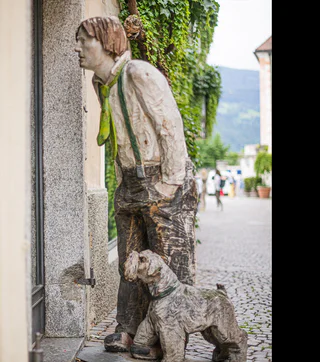
Lodenwelt in Vintl
Vandoies di Sopra/Obervintl, Vintl/Vandoies, Brixen/Bressanone and environs

Vandoies di Sopra/Obervintl, Vintl/Vandoies, Brixen/Bressanone and environs

Sarentino/Sarnthein, Sarntal/Sarentino, Bolzano/Bozen and environs

Moso in Passiria/Moos in Passeier, Moos in Passeier/Moso in Passiria, Meran/Merano and environs

Sexten/Sesto, Dolomites Region 3 Zinnen

1/5
Bressanone città/Brixen Stadt, Brixen/Bressanone, Brixen/Bressanone and environs

Bolzano Centro/Bozen Zentrum, Bolzano/Bozen, Bolzano/Bozen and environs

1/4
Varna/Vahrn, Vahrn/Varna, Brixen/Bressanone and environs

1/5
Foiana/Völlan, Lana, Meran/Merano and environs

Dobbiaco Nuova/Neutoblach, Toblach/Dobbiaco, Dolomites Region 3 Zinnen

1/4
Aquaviva/Ackpfeif, Lana, Meran/Merano and environs

1/4
Tartsch/Tarces, Mals/Malles, Vinschgau/Val Venosta

1/6
Giovignano/Tschiffnon, Feldthurns/Velturno, Brixen/Bressanone and environs

1/2
Soprabolzano/Oberbozen, Ritten/Renon, Bolzano/Bozen and environs

Pavicolo/Pawigl, Lana, Meran/Merano and environs

1/4
Tagusa/Tagusens, Kastelruth/Castelrotto, Dolomites Region Seiser Alm

1/5
Parcines/Partschins, Partschins/Parcines, Meran/Merano and environs

1/2
Valdaora di Sopra/Oberolang, Olang/Valdaora, Dolomites Region Kronplatz/Plan de Corones

1/2
Riscone/Reischach, Al Plan/San Vigilio, Dolomites Region Kronplatz/Plan de Corones

1/9
Presule/Prösels, Völs am Schlern/Fiè allo Sciliar, Dolomites Region Seiser Alm

1/4
Untrum/Untrum, Klausen/Chiusa, Brixen/Bressanone and environs

1/5
Marlengo/Marling, Marling/Marlengo, Meran/Merano and environs

Bressanone città/Brixen Stadt, Brixen/Bressanone, Brixen/Bressanone and environs

1/4
Martello/Martell, Martell/Martello, Vinschgau/Val Venosta

1/9
S.Cristina Gherdëina/S.Cristina Val Gardena/S.Cristina Gherdëina/St.Christina in Gröden, S.Crestina Gherdëina/Santa Cristina Val Gardana, Dolomites Region Val Gardena

1/2
Aldino/Aldein, Aldein/Aldino

1/3
Santa Valburga/St. Walburg, Ulten/Ultimo, Meran/Merano and environs

Luson/Lüsen, Lüsen/Luson, Brixen/Bressanone and environs

1/5
Naturno/Naturns, Naturns/Naturno, Meran/Merano and environs

1/2
Brunico città/Bruneck Stadt, Bruneck/Brunico, Dolomites Region Kronplatz/Plan de Corones

Firmiano/Sigmundskron, Bolzano/Bozen, Alto Adige Wine Road